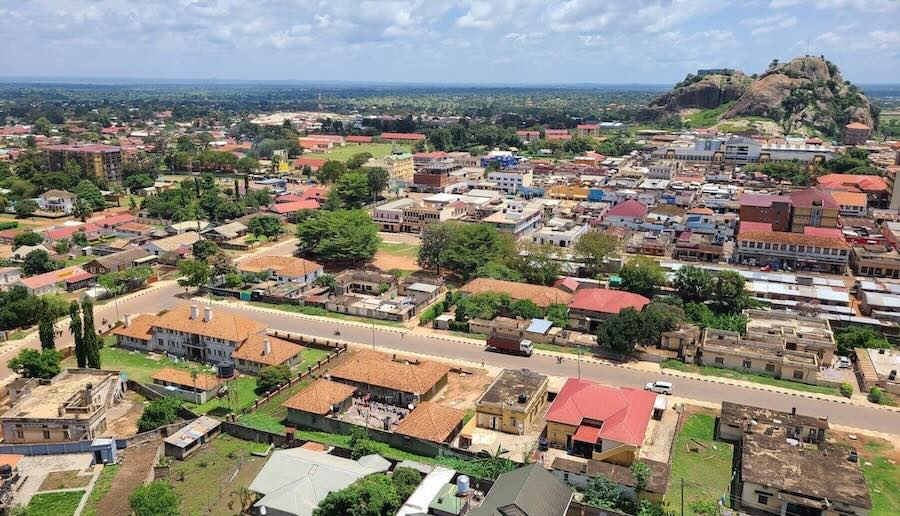Uganda’s Development Journey: Progress and Challenges Revealed in UBOS 2023/24 Household Survey

The Uganda Bureau of Statistics (UBOS) recently released its eighth National Household Survey for 2023/24, revealing significant strides in poverty reduction and income inequality while highlighting persistent challenges in education, healthcare access, and regional development disparities.
Poverty Reduction: A Steady Decline
The survey, presented by UBOS Chief Statistician Chris N. Mukiza (PhD), shows Uganda’s poverty rate has continued its impressive long-term decline, falling to 16.1% nationally in 2023/24. This represents a remarkable achievement from the 56.4% recorded in 1992/93.
“We’ve seen consistent improvement in poverty indicators across most regions,” noted an economic analyst reviewing the data. “The number of Ugandans living below the absolute poverty line of US$1 per day has decreased to 7 million, down from 8.3 million in 2019/20.”
Urban areas continue to show lower poverty rates (10.3%) compared to rural areas (19.4%), though both have improved from previous surveys. These gains demonstrate the effectiveness of various national development programs implemented over the past decades.
Income Inequality Narrowing
One of the survey’s most positive findings is the significant reduction in income inequality nationwide. The Gini coefficient, which measures inequality (where 0 represents perfect equality and 1 represents perfect inequality), improved from 0.413 in 2019/20 to 0.382 in 2023/24.
“This is particularly encouraging as it shows economic growth is becoming more inclusive,” commented a development economist. Notable improvements were seen in the Northern and Central regions, while several sub-regions including Buganda South, Elgon, Karamoja, and Lango registered significant reductions in income inequality.
Education: Mixed Progress
The education sector presents a mixed picture. Primary school gross enrollment rates have improved slightly to 119.5% nationally (from 118.0% in 2019/20), with rural areas showing stronger performance at 121.2% compared to urban areas at 116.3%.
However, the survey reveals concerning trends in secondary education, where gross enrollment rates have declined to 33.6% nationally (from 36.8% in 2019/20). More worrying is the drop in net enrollment rates for secondary education to 23.2% in 2023/24 from 27.3% in 2019/20.
“While we’re seeing more children enter primary education, the transition to and completion of secondary education remains challenging,” stated an education policy specialist. “This highlights the need for targeted interventions to address barriers to secondary school attendance, particularly in rural areas where the net enrollment rate is just 16.7%.”
Healthcare: Improved Access but Persistent Challenges
The health sector shows improvements in accessibility, with 90% of Ugandans now living within 5km of a health facility, compared to 86% in 2016/17. However, the survey identified that 21.2% of the population reported being sick or injured, a slight increase from 19.4% in 2019/20.
Of those who fell ill, 82% sought medical care, while 18% did not. The main reasons cited for not seeking care were mild illness (46.9%), having medicine at home (15.7%), lack of money (10.1%), and distance to health facilities (9.8%).
“The healthcare seeking behavior data points to ongoing challenges in healthcare affordability and accessibility,” observed a public health analyst. “The fact that financial constraints and distance to facilities remain significant barriers for many Ugandans indicates more investment is needed in healthcare infrastructure and financing mechanisms.”
Regional Disparities Persist
Despite overall progress, the survey highlights persistent regional disparities. Karamoja remains the most impoverished sub-region with a poverty rate of 74.2%, followed by Bukedi (29.9%) and Teso (29.8%). In stark contrast, Kampala’s poverty rate stands at just 1.1%.
Child poverty also shows concerning regional variations, with Karamoja recording the highest child poverty rate at 77.7%, while Kampala’s rate is just 1.6%.
“These regional disparities require targeted interventions to ensure equitable development across the country,” emphasized a regional development specialist. “The poverty gap analysis in the survey provides valuable insights for policymakers, showing that regions like Karamoja require substantial additional resources – up to 31.5% more – to lift people above the poverty line.”
Employment Patterns Evolving
The labor force data shows a continuing shift in Uganda’s economy, with agriculture employing 40.1% of workers nationally (up slightly from 39.8% in 2019/20), while services employ 47.3% (up from 46.2%). The industrial sector shows a decline to 12.6% from 14.0% in 2019/20.
Urban-rural differences in employment remain pronounced, with agriculture employing 55.0% of rural workers but only 22.0% of urban workers. Conversely, services dominate urban employment at 63.9%.
Looking Ahead: Priorities for Sustained Progress
The 2023/24 UNHS provides a comprehensive picture of Uganda’s socioeconomic landscape, highlighting both achievements and challenges. To maintain progress, experts suggest several priority areas:
- Targeted poverty reduction programs for high-poverty regions, particularly Karamoja, Bukedi, and Teso
- Secondary education initiatives to improve transition rates from primary to secondary school
- Healthcare financing reforms to reduce out-of-pocket expenses that prevent people from seeking care
- Rural development strategies to narrow the persistent urban-rural divide
- Child poverty interventions focused on the most vulnerable regions
“This survey gives us valuable data to assess our development trajectory,” concluded a government spokesperson. “While we celebrate the significant progress in poverty reduction and inequality, we recognize the work ahead in addressing regional disparities and improving educational and health outcomes for all Ugandans.”
The Uganda National Household Survey 2023/24 was conducted with a sample size of 17,350 households across 1,735 enumeration areas, achieving a response rate of 92%.
